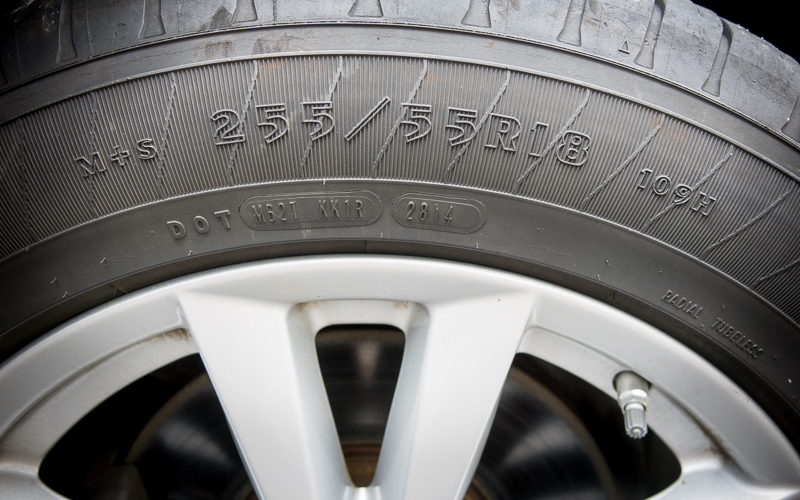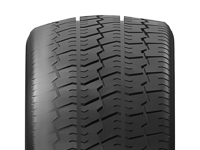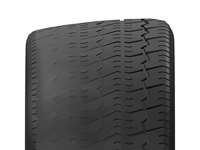Tread Wear Guide


Overinflated
An overinflated tire will show it's wear down the middle of the tire's tread. This can be directly related to having too much air in the tire causing the middle of the tire to take on the pressure from the road.
To correct an overinflated tire, stop by your local Sullivan Tire and Auto Service during business hours for a free air check and adjustment.

Underinflated
An underinflated tire will show it's wear on the sides or the shoulder of the tire. When there isn't enough air in the tire, the shoulder of the tire will take on the majority of the pressure from the road.
To correct an underinflated tire, stop by your local Sullivan Tire and Auto Service during business hours for a free air check and adjustment.

Camber
Camber is the vertical angle in which the wheel is tilting towards or away from the vehicle. When the wheel tilts towards the top, it's called positive camber and when it's tilting away it's called negative camber. When the camber is out of place, it will cause the tire to wear on one side of the tire's tread.
To prevent any additional camber wear, schedule an appointment with your local Sullivan Tire and Auto Service to have your vehicle aligned.

Toe
Toe is the horizontal angle in which the wheel is pointing in or away from the center line of the vehicle. When the wheel is pointing out it is called negative toe. When it is pointing in, it is called positive toe. If the toe is positive or negative, the tread on the tire will wear at one angle from the shoulder of the opposite end of the tire.
To prevent any additional toe wear, schedule an appointment with your local Sullivan Tire and Auto Service to have your vehicle aligned.

Cupping Wear
Cupping wear can occur when your vehicle begins to bounce as you drive causing the tires to leave the ground for a moment. When the tire lands back on the road, the bouncing can cause random patched of rubber to be gauged out of the tread. The patches will appear to be smooth since continuous driving on them has worn down any rough edges.
To prevent any further uneven cupping wear, schedule an appointment with your local Sullivan Tire and Auto Service to diagnose the tire and to check all other vehicle components to determine the root of the bouncing issue.
Take the Penny Test!
Not sure if your tire tread is low? Take the Penny Test!
Insert a penny in between your tire's tread with Lincoln's head facing you and pointing down. If you can see all of Lincoln's head, your tread depth is less than 2/32 of an inch and it's time to replace your tires. Repeat this step in three separate areas of the tire; inner, center and outside. Tread depth below 2/32", the U.S. Tire Manufacturers Association (USTMA) considers the tire as having reached the end of its useful life and should be replaced.
Need new Tires?
Find the perfect tires for your vehicle with our online search tools. We're also offering great deals on a variety of brands. Check them out here!






